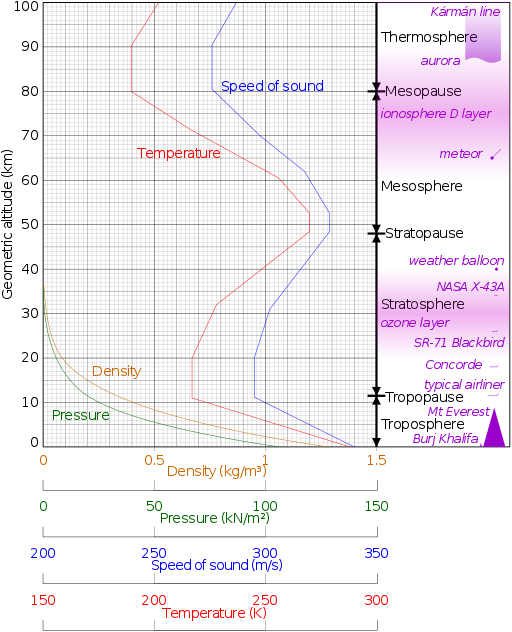This is a orbital photo taken by the Space Shuttle Endeavor of the horizon. The standard calculation for Total Solar Irradiance (TSI) assumes the actual surface area of the Earth and does not make any adjustments for altitude. When I have mention in the past that not adjusting for altitude leads to more uncertainty, I have generally been blown off because the impact is only on the order of a half of a percent. Half percent can start adding up after a while.
If the Turbopause altitude is the average altitude of the 184K outer radiant "shell", the error as currently calculated would be about 3% and if the horizon at altitude extends the length of day, that could be another percent or two. 65Wm-2, the effective energy of the Turbopause "shell" is only 4.8 percent of the true Top of the Atmosphere (TOA) TSI.
The true Turbopause is located near 100km in altitude at the Karman line. I have seen a few papers that mention the Turbopause temperature was recorded at ~184 K degrees. The Mesopause is in that same temperature range and could more likely be the more accurate altitude range of the 184K radiant shell. While the simplified charts borrowed from Wikipedia don't do the atmosphere justice, they do indicate that there is a stable temperature range on the order of 10 or more kilometers thick. The Stratosphere inversion tends to conceal the "effective" temperatures or temperatures that would be "seen" by a parcel of air in deep convection. I will try and dig up some tropical radiosonde data which indicates temperatures as low as -105 C at 20 kilometers. So keep in mind these simplified charts mask lots of dynamics that can impact climate.
I am not close to "proving" that the 65 Wm-2 in the Turbopause shell was missed, but most everything I have done indicates that it has been. It definitely would explain a lot of things


No comments:
Post a Comment